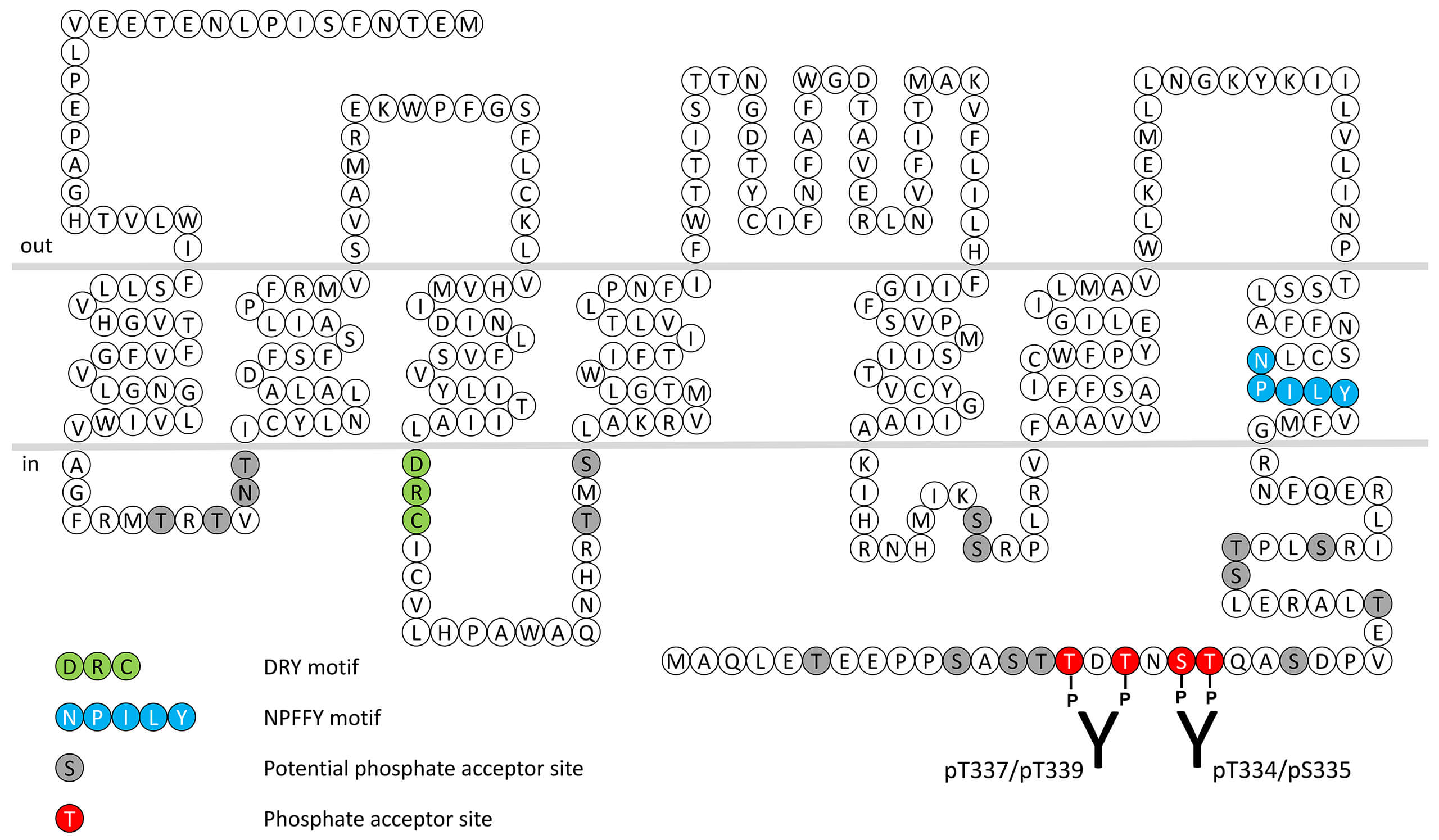No results were found for the filter!
NEW
 pT334/pS335-FPR3 (phospho-Formylpeptide...
pT334/pS335-FPR3 (phospho-Formylpeptide... Threonine334/Serine335 (T334/S335) is a major phosphorylation site of the FPR3 receptor. The pT334/pS335-FPR3 antibody detects phosphorylation in response to high-efficacy agonists. T334/S335 phosphorylation is a key regulator of FPR3...
$ 375.00 *
NEW
 pT337/pT339-FPR3 (phospho-Formylpeptide...
pT337/pT339-FPR3 (phospho-Formylpeptide... Threonine337/Threonine339 (T337/T339) is a major phosphorylation site of the FPR3 receptor. The pT337/pT339-FPR3 antibody detects phosphorylation in response to high-efficacy agonists. T337/T339 phosphorylation is a key regulator of FPR3...
$ 375.00 *
NEW
 FPR3 (non-phospho), Formylpeptide Receptor 3...
FPR3 (non-phospho), Formylpeptide Receptor 3... The FPR3 receptor antibody is directed against the distal end of the carboxyl-terminal tail of human Formylpeptide Receptor 3. It can be used to detect total FPR3 receptors in Western blots independent of phosphorylation. The FPR3...
$ 300.00 *
Recently viewed


 The formylpeptide receptors respond to exogenous ligands such as the bacterial product fMet-Leu-Phe (fMLP). Bacterial protein synthesis is initiated with an N-Formylmethionine (fMet) at the amino terminus. This feature of prokaryotic protein synthesis is used by mammalian immune cells to recognize the invading bacteria. These bacterial peptides are able to induce chemotaxis, degranulation and superoxide production, which are important bactericidal functions. The human genome contains 3 genes coding for a subfamily of three formylpeptide receptors (FPRs). FPRs interact with a diverse collection of exogenous and endogenous ligands including lipoxin A4, annexin I, cathepsin G, amyloid β42 and spinorphin and are among the most promiscuous GPCRs known to date. The primary function of FPR1 is recognition of bacterial mitochondrial formylpeptides. FPR2 is able to interact with a variety of ligands with different structures including lipid mediators such as lipoxin A4. Compared to FPR1 and FPR2, much less is known about the pharmacological properties of FPR3. FPR3 receptor desensitization, β-arrestin recruitment and internalization are regulated by phosphorylation of carboxyl-terminal threonine334/serine335 (pT334/pS335-FPR3) and threonine337/threonine339 (pT337/pT339-FPR3). This nomenclature refers to the human FPR3 receptor. For more information on FPR3 pharmacology please refer to the
The formylpeptide receptors respond to exogenous ligands such as the bacterial product fMet-Leu-Phe (fMLP). Bacterial protein synthesis is initiated with an N-Formylmethionine (fMet) at the amino terminus. This feature of prokaryotic protein synthesis is used by mammalian immune cells to recognize the invading bacteria. These bacterial peptides are able to induce chemotaxis, degranulation and superoxide production, which are important bactericidal functions. The human genome contains 3 genes coding for a subfamily of three formylpeptide receptors (FPRs). FPRs interact with a diverse collection of exogenous and endogenous ligands including lipoxin A4, annexin I, cathepsin G, amyloid β42 and spinorphin and are among the most promiscuous GPCRs known to date. The primary function of FPR1 is recognition of bacterial mitochondrial formylpeptides. FPR2 is able to interact with a variety of ligands with different structures including lipid mediators such as lipoxin A4. Compared to FPR1 and FPR2, much less is known about the pharmacological properties of FPR3. FPR3 receptor desensitization, β-arrestin recruitment and internalization are regulated by phosphorylation of carboxyl-terminal threonine334/serine335 (pT334/pS335-FPR3) and threonine337/threonine339 (pT337/pT339-FPR3). This nomenclature refers to the human FPR3 receptor. For more information on FPR3 pharmacology please refer to the